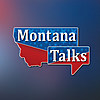
Forecasters: ‘Not Likely’ Montana Will Make up River Runoff
Every day of cooler weather. Certainly, every day when snow showers powder the high country.
It's all helping to make up some of the ground from the Montana "snow drought" earlier this winter.
But now, forecasters tracking the meager snowpack are saying it's "not likely" Montana weather will make up the deficit for our water supply, leading to some of the lowest runoff we've experienced in more than 30 years.

Late-season moisture has been sketchy
Researchers at the USDA Natural Resources Conservation Service have been closely tracking the snowpack, reporting some river basins were at some of the lowest levels ever recorded early in the season.
RELATED: UM Researchers See Rivers in Peril With Low Snowpack
A few weeks ago, there had been hope that February's strong precipitation would rebound into the critical months of March and April. That's important, because some of the most significant building of snowpack, with the "freeze-thaw" cycle of the spring, happens this time of the year.
Water Supply Specialist Eric Larson says February did provide "well above normal precipitation to nearly all of Montana."
However, that trend didn't last, NRCS checked Snotel stations and found that the recovery "tapered off" in many basins, with only southwest and southern Montana receiving "above normal" moisture.
What's ahead? It's not good
The big concern is the amount of water in what snow there is, which is known as the "snow water equivalent ". Forecasters say that the critical figure is 10 to 13 inches below normal as of April 1st.
"Additional accumulation in the coming months could bring a higher peak, but given the low snow year it has been, loss of snowpack this early is not ideal." -NRCS
Although there are a few exceptions, forecasters say the streamflows needed for agriculture, recreation, and communities is expected to be about 70-85% of normal through July. Some locations, like the Teton Basin, Bighole, Sun, Blackfoot, and Clark Fork may see less than 65% unless there is a significant amount of moisture in the coming weeks.
LOOK: Biggest snowfalls recorded in Montana history
Gallery Credit: Stacker



